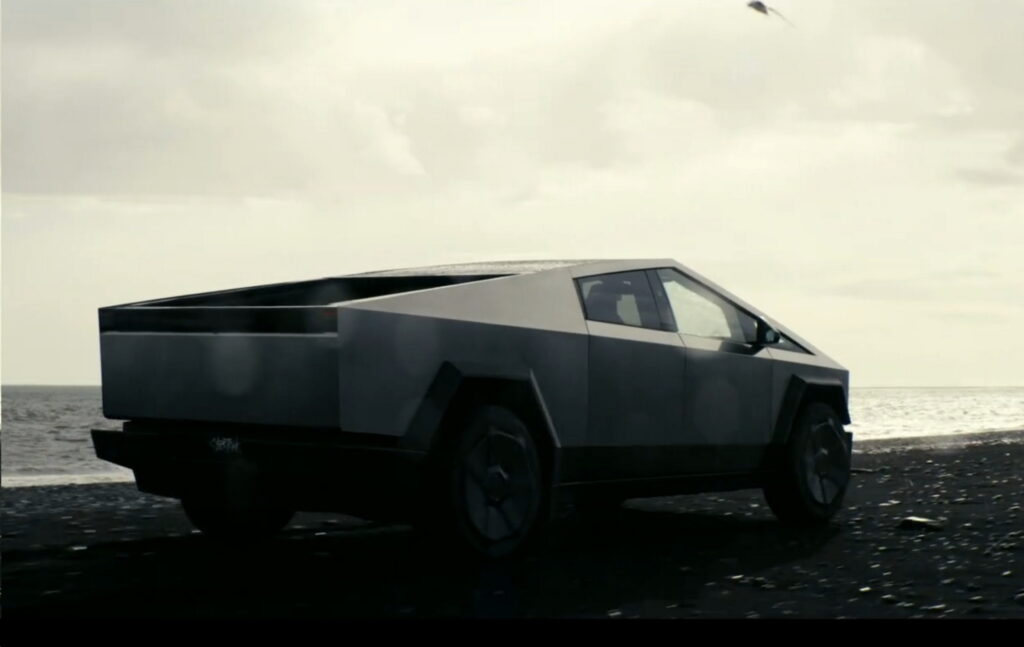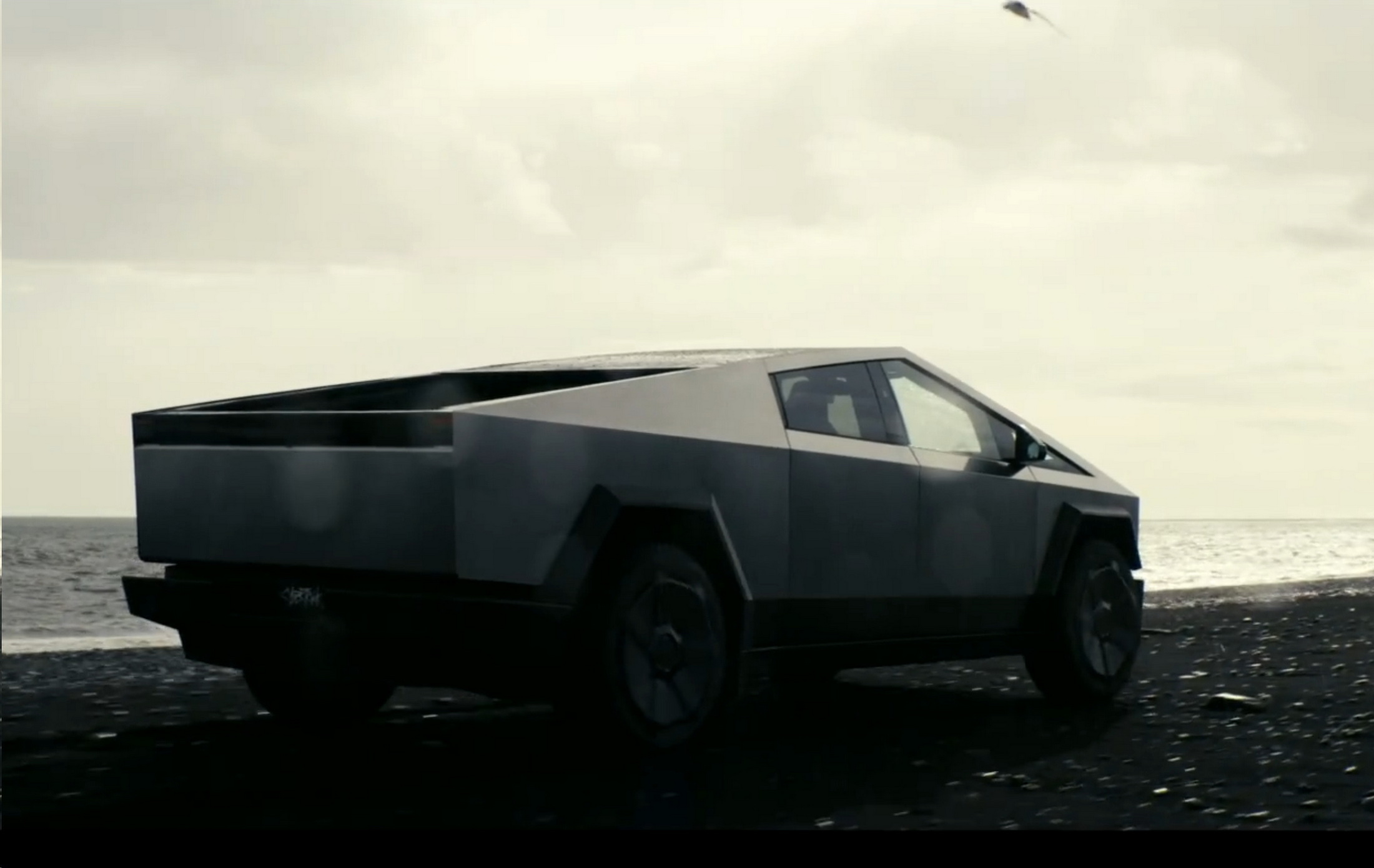Tesla delivered the first Cybertrucks to customers today at an event hosted at its gigafactory in Austin, Texas. The automaker revealed that the production version of the long-awaited and long-delayed, all-electric truck will be able to tow 11,000 lbs (4,990 kg), and accelerate to 60 mph (96 km/h) in just 2.6 seconds in its most powerful form.
Tesla CEO Elon Musk presented the first trucks to their owners after a short presentation, expounding on its capabilities. In addition to its impressive towing capabilities, Musk said that the truck will be able to haul 2,500 lbs (1,134 kg), in its six-foot-long by four-foot-wide composite bed.
1. Faster Than A Porsche 911
It will also be powerful. To prove it, the automaker showed a video of the Cybertruck outrunning a new 2023 Porsche 911 down the drag strip, while towing another 911 behind it.
Read: Who Did It Best? Rivian R1T Tackles Same Off-Road Obstacle As Tesla Cybertruck
Unladen, the most potent version of the truck should be able to storm up to 60 mph (96 km/h) in just 2.6 seconds, and will be able to cover the quarter-mile in less than 11 seconds. That’s thanks to torque that also allows it to pull a tractor pull sled farther down a strip than a Ford F-350 diesel.
Tesla adds that the truck will be capable off the drag strip, too, where its 35-inch all-terrain tires, and its four-corner air suspension will give it 17-inches of ground clearance, with no low-hanging differential to worry about.
2. Rock-Proof Windows And A Bullet Resistant Body
At the conspicuously dim delivery event (is it, perhaps, hiding something?), Musk had designer Franz von Holzhausen throw a baseball at the side window, to prove that it could withstand the shock (which it didn’t during the initial reveal, in 2019).
In addition to calling the windows “essentially rock proof,” which he said had the side benefit of giving owners a quiet ride, he told the audience that the body was bullet-resistant. To prove it, he showed a video of someone firing a multitude of firearms at the truck, and slo-mo footage of the slugs flattening against the stainless steel body.
He asked, rhetorically, why Tesla would develop its own, proprietary stainless steel alloy for the truck that made it bullet resistant, and said, “Why not?” Musk also claimed that the “exoskeleton body also gives the truck more torsional rigidity than a McLaren P1,” while also having a coefficient of drag of 0.335, which is roughly on par with a 2018 Subaru Forester. By comparison, the Tesla Model S has a coefficient of 0.24, so it’s not stunningly aerodynamic, but it isn’t exactly a brick, either.
3. Underwhelming Range

Perhaps, in part, because of that underwhelming Cd, the Cybertruck will have an estimated range of up to 340 miles (547 km). Although that’s plenty, it’s less than the 500+ miles (805 km) Tesla promised in 2019. At least it will be able to recover up to 136 miles (219 km) of range after as little as 15 minutes at a Supercharger.
That figure is only for the longest-range “All-Wheel Drive” variant. The “Rear-Wheel Drive” model, which will become available in 2025, gets just 250 miles (402 km) of range, and will take 6.5 seconds to reach 60 mph. Finally, the “Cyberbeast” will be able to go 320 miles (515 km), and will have a top speed of 130 mph (209 km/h), as opposed to the top 112 mph (180 km/h) top speed of the other models.
However, Range extenders on the All-Wheel Drive and Cyberbeast models promise to deliver 470+ miles (756 km) and 440+ miles (708 km) of driving, the automaker claims. It has not yet clarified how specifically the option will work.
4. Here’s How Much It Costs
Whereas the range figures are a little smaller than expected, the prices are larger. Tesla promised a $40,000 entry-point in 2019, but now says that the RWD version will start at $60,990. The AWD model starts at $79,990, and the Cyberbeast gets an MSRP of $99,990.
Although the first examples of the Cybertruck are now in the hands of what Musk promised were real customers, just 10 left the event. The company says that production difficulties mean that it will take it until 2025 before full-scale production is running. In the meantime, at least the people who put in a pre-order know what they’re getting now.













